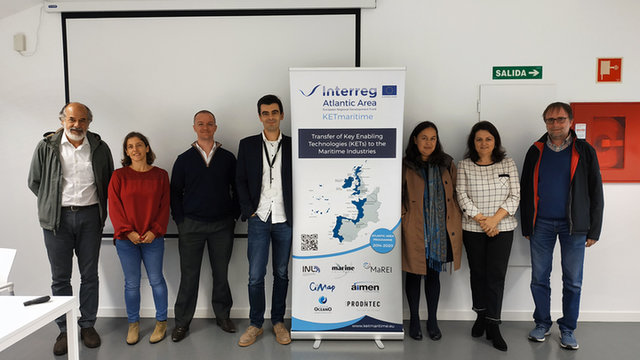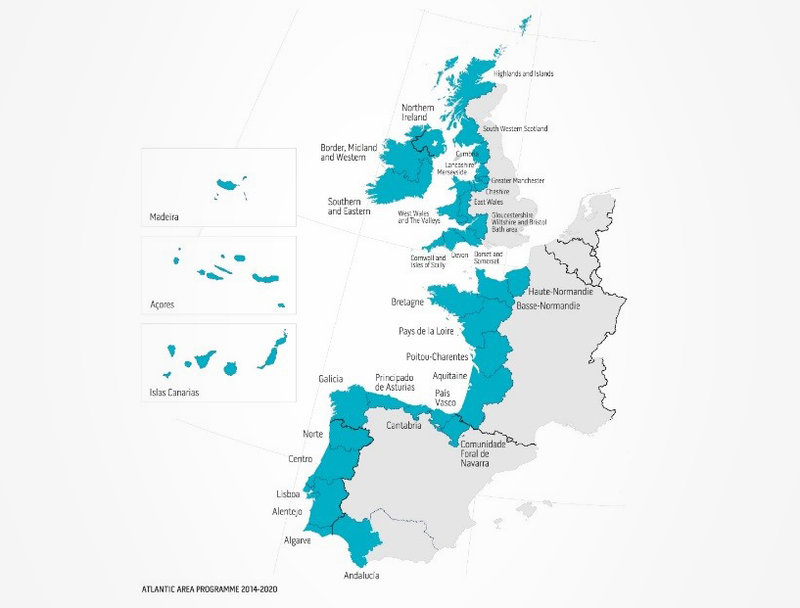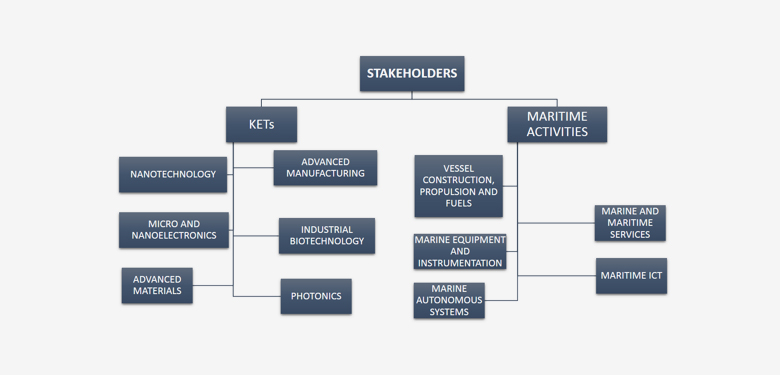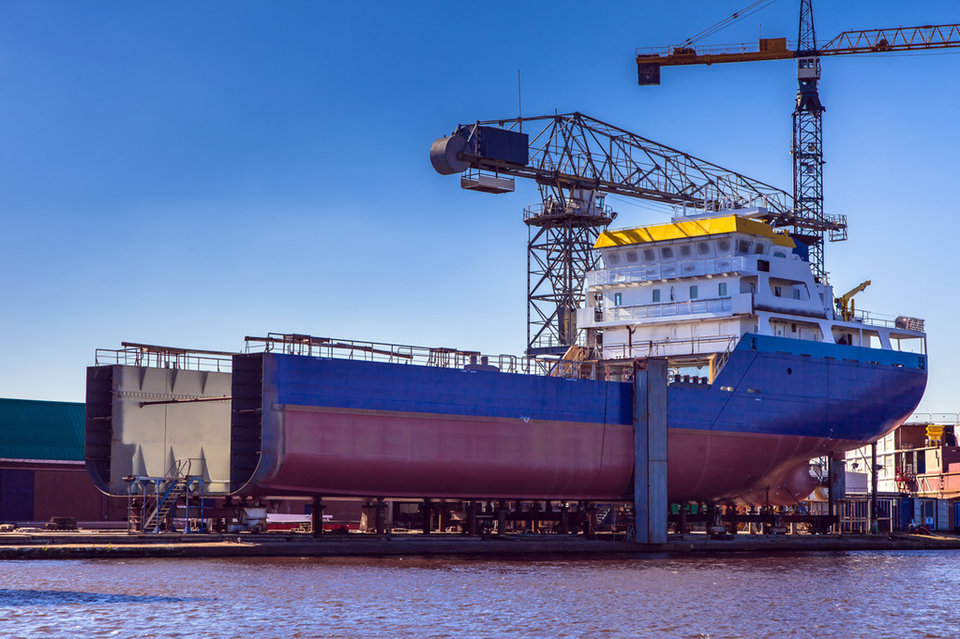Q&A | Technology
Beam me up:
using blue laser technology to improve underwater detection
The KETmaritime project is developing photonic marine applications that use concentrated beams of light to assist with a host of maritime tasks. Julian Turner gets the lowdown from Paula Rico of the AIMEN Technology Centre and Ana Vila of the International Iberian Nanotechnology Laboratory.
Image:
Paula Rico works in
the innovation management unit at non-profit technology research association AIMEN, a partner in the KETmaritime project. Ana Vila is the KETmaritime project coordinator, and a business and strategic relations officer at the International Iberian Nanotechnology Laboratory.

Partners involved in the KETmaritime project. Image: KETmaritime project
Julian Turner:
What is the KETmaritime project and what are its key objectives?
Ana Vila: The main objective of the KETmaritime project is to foster the use of key enabling technologies (KETs) in the Atlantic. This goal will be achieved by building a cooperative network between KET providers (research institutions) and users (maritime operators) in order to promote technology transfer of new opportunities to the maritime industries.
The KETmaritime network will deliver a better integration of scientific, industrial and financial stakeholders, bringing together both public and private organisations with experience in R&D, technology transfer in KETs, and maritime activities to facilitate the adoption of novel technological developments and new ways of thinking into traditional maritime companies, especially SMEs.
The project is part of the innovation priority axis of the Interreg Atlantic Area Programme and is supported by the European Regional Development Fund.
KETmaritime involves seven partners from five European countries and six regions, has a total budget of close to €1m and will run from November 2017 until the end of June 2020.

Ana Vila, KETmaritime project coordinator. Image: KETmaritime project
JT: What is the study of photonics?
Paula Rico: Photonics provides sustainable, energy-efficient, miniaturised and low-cost products that allow innovative solutions in a wide field of applications. It is one of the most important technologies of the 21st century, enabling solutions for global societal challenges, and is classified as a KET by the EU.
Photonic science translates into a multitude of applications, many of which have evolved into sensor technologies that can provide information about the environment. In the marine field, photonics can play an important role, based on the development of detection and recognition systems applicable to various navigational areas, such as the tracking of objects and masses at sea and maritime rescue.

AIMEN's Paula Rico. Image: KETmaritime project
JT: What are ‘blue light lasers’, and what advantages do they offer compared with acoustic maritime solutions for underwater target detection?
AV: Our project partner Henning Lebius from the multidisciplinary research laboratory CIMAP in Caen, France, describes blue light lasers as emitting highly focused light with wavelengths of about 450nm. CIMAP has developed lasers with high output power by internal frequency doubling of continuous-wave, Nd-doped fibre lasers.
The absorption of light in pure water is minimal in the blue spectral range so that laser light can propagate in a specific direction over long distances with minimal attenuation. Therefore, these light sources can be used to determine distances, or by means of Lidar techniques record and image underwater objects, like submarines and archaeological sites.
They also allow new methods of wide-band and interception-proofed communication.

KETmaritime involves seven partners from five European countries and six regions. Image: KETmaritime project
JT: Please talk in more detail about CIMAP’s recent ground-breaking work developing blue-light lasers in constant wave and pulsed regimes.
AV: CIMAP recently achieved a record 7.5W constant wave output at 452nm wavelength. This is understood to be by far the highest constant wave ‘pure blue’ power generated from a frequency-doubled fibre laser. The absorption of light in pure water is lowest in the 400nm-450nm spectral range. Laser light set in this range can penetrate long distances with minimal reduction in strength. These light sources can be used to determine distances, or by means of Lidar techniques record underwater objects, like submarines and archaeological sites.
Conventional methods to detect underwater targets have employed acoustic waves. However, laser-based systems have clear advantages in high directionality and high range resolution. They also allow new methods of wide-band and interception-proofed communication.

Stakeholders and research/application areas of the KETmaritime project. Image: KETmaritime project
JT: Please provide some specific examples of photonics applications in marine sectors.
PR: Techniques for detecting fish such as high-performance liquid chromatography are slow, require sampling and are not in real-time, so new tools able to detect contaminants in the sea are required.
Photonics solutions offer rapid analysis, low cost, on-line detection and [the ability to integrate] into existing equipment. In terms of aquaculture, LEDs provide light of different wavelengths that can be adapted to stimulating and controlling the growth of marine products, analysing water quality, etc.
Security monitoring of oil and gas infrastructure is crucial but oil or gas leaks are often invisible or tough to detect, and such an event can sometimes last for several hours before being noticed.
There is a large variety of sensing devices for the exploration of oil and gas, the majority based on electronics. However, optical sensors have been used successfully for specific measurements where no replacement technology exists.
Photonic technology can also be used to add sensing capabilities for resources management in seabed mining; improve marine and maritime surveillance; boost navigability in shipbuilding, port, transport and logistics sectors; monitor marine environments during marine construction and dredging; and clean and conserve marine ecosystems. Lidar systems can also be used to manage the performance of offshore wind energy systems.

Ship construction on a shipbuilding Wharf in the Netherlands.
JT: What are the future needs of the Atlantic maritime industry and how can these be met by advances in photonic technology?
AV: The KETmaritime project mapped research and technical development projects among several partners in order to gauge KETs application and interest and what became clear is that some ‘blue economy’ sectors already have a very strong usage of KETs, particularly in the biotechnology sphere.
Some sectors involving the fabrication of equipment and structures – ship and boat building, for example – also show strong interest in applying advanced manufacturing techniques to improve cost-effectiveness, and/or nano and microelectronics, as did the SMEs that approached us.
The current approach is to mix all possible digital tools – AI and blockchain, for example –into photonics technologies in order to achieve synergetic outputs, making maritime navigation systems more autonomous, robust and safe. The potential results for the maritime sector could be amazing.